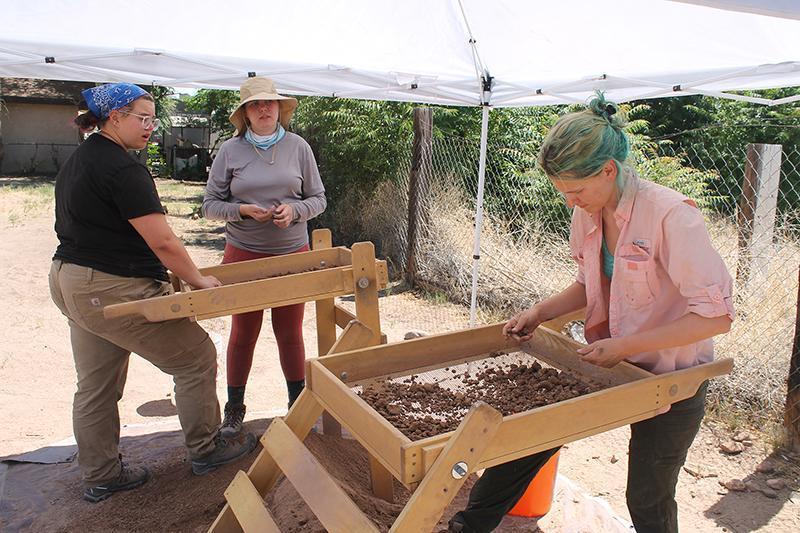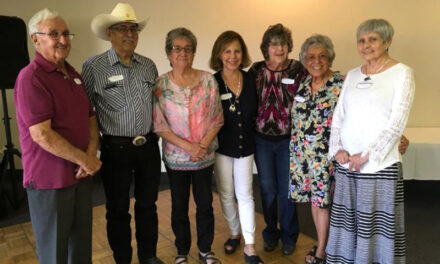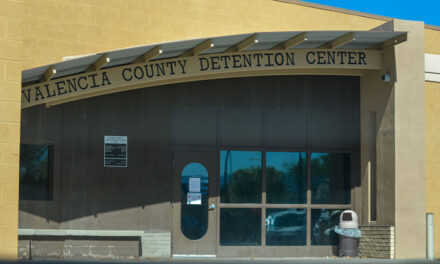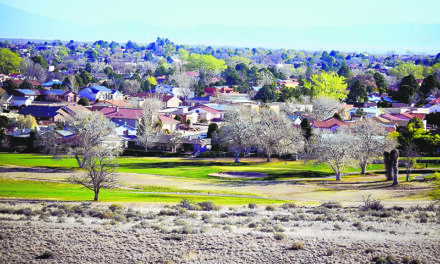BELEN — After a two-year hiatus due to COVID-19, a team of bioarchaeologists have returned to learn more about Plaza Vieja, Belen’s Old Town, home of the original Our Lady of Belen Catholic Church.
The primary goals of the project are to establish the original foundation of the mission church, recover any human remains found buried in or around the church, which will be reinterred at the Our Lady of Belen Cemetery once the dig is finalized, and to learn the effects of colonialism on indigenous groups.
“Everybody in the neighborhood knows that the church is here. At least everybody says it’s here. I think we can agree, it is here,” said one of the dig’s co-primary investigators, Dr. Pamela Stone, a visiting lecturer in anthropology at Mount Holyoke College in Massachusetts.
Dr. Debra Martin, a professor of anthropology at the University of Nevada, Las Vegas, is the other co-primary investigator. Both have been a part of the project since the first excavation season in 2018.
Belen historian and archivist for University of New Mexico’s Center for Southwest Research and Special Collections Samuel Sisneros is serving as the project’s historian and consultant.
The units — more commonly called pits — were opened on May 16 and explored until June 17 by Stone, Martin and a team of graduate students.
“We have gotten a ton of data this year, and we need time to process it,” Stone said a few days before the units were closed for the season.
Because the information hasn’t been fully analyzed and processed, Stone spoke in degrees of certainty about the location of the foundation.
“We’re fairly certain we’ve found the foundation,” she said, noting new units were opened this year and found additional stone structures consistent with the ones found in the first two seasons.
“We’re feeling pretty confident. A bunch of the state archaeologists were here (Tuesday, June 15) and we had the units open. They were all in agreement that this was the foundation, so we’re feeling fairly certain.
“I won’t say 100 percent confident, but we’re fairly certain, this is inside what would have been the church.”
Stone was referring to the last unit open on the piece of private property in Old Town, where a “fully articulated” skeleton was found this year. An articulated skeleton is a fossil skeleton found all in one piece, with the bones still arranged in the proper order.

Julia M. Dendinger | News-Bulletin photo
Graduate students Katie Stansbury, Emily Edmonds and Keri Porter, sift dirt pulled out of the excavation pits at the bioarchaeological dig at the site of the former Our Lady of Belen Catholic Church in the city of Belen’s Old Town.
Until this year, the bones found were mixed together making it impossible to group them. The scattering may have been due to flooding, development or reuse of areas of the cemetery.
“You’re talking about people who had limited resources,” Stone said. “Sometimes burial plots were reused. The fact that these are intact tells us this person was probably one of the last people buried here.”
Church burial records indicate people were buried in the Old Town church grounds and cemetery up to 1860, when burials began at the current church.
While parts of what are most likely the stone foundation of Nuestra Señora de Belén have been found, Stone said details like it’s exact dimensions and the location of the entrance are still unknown.
“Because everything about the church is written in language of the 1700s, we’re not sure how wide it is, or where exactly the front of it is and the back,” she said.
As items in the pits are cataloged and put in small brown paper bags for later analysis, Stone notes that, for the most part, there have been very few objects found during the project, another indication of a community with few resources.
“Most people, at this time, were buried in simple shrouds. If they had things of value, they weren’t buried with them,” she said. “We don’t find a lot of metal — pins, buttons or jewelry.”
In the 2019 season, Martin found a piece of bone from a cranium with an irregular surface, indicating internal bleeding from scurvy, a severe deficiency of vitamin C. While unable to say why there was a deficiency, the effects were clear.
Remains have also been located that indicated people performing repetitive activities, such as regularly carrying very heavy loads on their backs, grinding grains and squatting or sitting in certain positions for long periods of time.
According to a white paper by Stone, Martin and Sisneros, during the 1720s and ’30s, formerly enslaved Native Americans, called Genizaros, began settling in villages in the Rio Abajo, from Albuquerque south to the Isleta Pueblo and Belen area.
By 1740, a group of Genizaros were established in Belen. Genizaro is a Spanish colonial term used for Native Americans from various tribes who were captured and brought into Spanish households as servants and assimilated into the colonial Spanish social and religious systems.
Captivity and servitude resulted in the suppression of their cultures, languages and identity. Once freed to certain extents and labeled Genizaro, they often were grouped together and lived at the margins of the Spanish and Pueblo Indian societies.
Around 1740, Spanish/Mestizo people, some with their Native American servants, migrated from northern New Mexico to Belen, and received the Spanish land grant of Nuestra Señora de Belén, which was initially contested by the established Genizaro community.
“By 1750 the two communities while living separately were building what became initially the Mission Pueblo de Belén,” the paper reads, noting the census that year indicated there were 162 people in both communities, 53 percent of who were Genizaro villagers and American Indian servants, and 47 percent Spanish and Mestizo land grant owners.
“By the early 1800s, the two communities were well into merging and forming a new Mestizo community at Belén and surrounding plazas,” the white paper reads. “This population represents the original community that many individuals living in Belén and elsewhere are descendent from.”
Julia M. Dendinger began working at the VCNB in 2006. She covers Valencia County government, Belen Consolidated Schools and the village of Bosque Farms. She is a member of the Society of Professional Journalists Rio Grande chapter’s board of directors.




